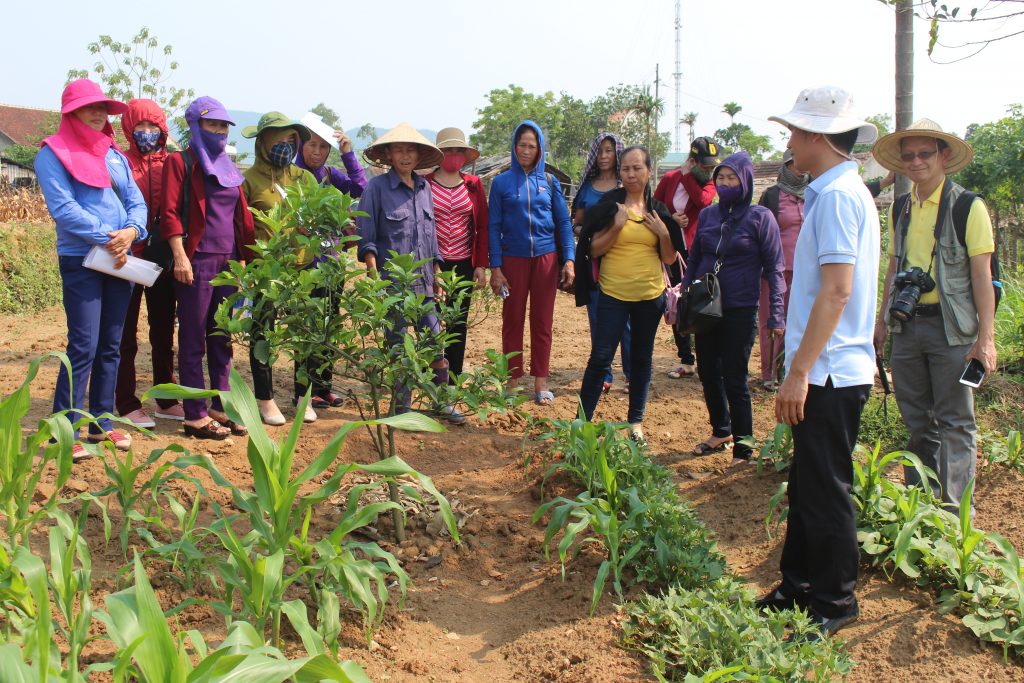The principles of extension programme planning indicate earlier shall help us develop the logical steps in the program planning process. 8 steps form a continuous cycle of program determination and programme implementation in extension.
Steps of extension programme planning
The 8 steps of extension programme planning are discussed below with examples.

1. Collection of facts
It is the starting point of the program planning process. Pertinent data may be collected from the available records and by the survey of the area. Information relating to the people, their Enterprises, levels of technology, facilities and constraints values, etc., relevant to program building may be collected. Information also is collected from other organizations in the area. The program planning process is explained with an example. There is a village where farmers are poor, and something is to be done to improve the condition.
We conduct a survey of the village and collect information on the number of farm facilities, their occupations, land use pattern, utilization of water resources, facilities for marketing availability of inputs and credit, their attitude towards various enterprises, and extension services’ strength the area, etc. We also collect relevant information from other organizations.
2. Analysis of situation
The data and information collected are then analyzed in an unbiased way, keeping in view the feeling expressed by the client system. This shall help in understanding the situation from its proper perspective.
3. Identification of problems
Correct analysis and interpretation of the data shall help in correctly identifying problems. There may be many problems, but only the urgent and significant ones which may be solved with the available resources and within limits of time should be selected. The selection of many problems that cannot be managed appropriately may lead to the program’s failure and generate frustration among the people.
In the present example, after analyzing the data and relevant information with the local people, the three most critical problems are identified, which need an immediate solution. These are, for example, low levels of income employment and nutrition in the farm families.
4. Determination of objectives and goals
The objectives are then set forth based on the significant needs identified. The goals should be direct and stated in clear terms. In the present examples, the objectives then become to increase levels of income, employment, and nutrition of the farm families in the village. Therefore, there is a need to state them in terms of specific goals To make the objectives realistic and actionable.
In determining goals, it may be necessary to again go through the data and information analyzed to find out what could actually be done in the existing situation with the available resources and time which will be compatible and with which the shall people cooperate. It is necessary to discuss with the local people and institutions, legitimizing the program planning process.
5. Developing plan of work and calendar of operation
The plan of work should be in written form and shall indicate who shall do what job. i.e., what the change agent system and thus line system shall do, which institutions, organization, Service Department shall be involved in the financial requirement and how it shall be met; what arrangements shall be made for marketing the produce, training of the farmers and so on.
The plan should have all the essential details, and no important should be left out. The calendar of operation shall be prepared based on the plan of work and shall is specified when a particular work shall be done, preferably mentioning data and time; how much quantity of different inputs including credit shall be required and when these must be made available when where and for how many days the farmers and farm women shall be trained.
Who are the specialists involved in training and preparing the handouts when the publication shall be ready for distribution? The calendar of operation shall specifically state how and when all the significant activities shall be performed. This should be at least for one season or for one year. In that case, they may be termed as the seasonal plan or annual plan.
6. Follow-through plan of work and calendar of operation
This is not a routine of work as many people may think. Training of participants, communication of information, conducting method demonstration, making regular visits, and mentioning are essential functions the extension agent shall perform at this stage. The work shall include solving and unforeseen problems and taking Cooperative steps where needed.
The performance of the extension agent and the organizational support received at this stage may make the difference between the success or failure of a program. Obtaining feedback information about what is happening to the farmers after introducing new technology is extremely important at this stage.
7. Evaluation of progress
Evaluation is the process of determining the extent to which we have been able to attain our objectives. All programs must have an inbuilt system of evaluation to know how well the work is done. It should be a continuous process to measure the end result and ensure what all the steps are correctly followed.
The evaluation may be formal and informal depending on the program’s importance and the availability of trained manpower, funds, facilities, and time. Program evaluation involves the following three essential steps
- Setting up some standards or criteria concerning the objectives.
- Collection of information.
- Making judgment and drawing some unbiased and valid conclusions.
8. Reconsideration and revision of the program
Based on the result of the evaluation, the program should be reconsidered and revised if needed. This reconsideration should be done not only with the participants but also with the scientist, administrators in extension organizations, and local bodies. Reconsideration shall help in making necessary corrections and modifications in the program.
